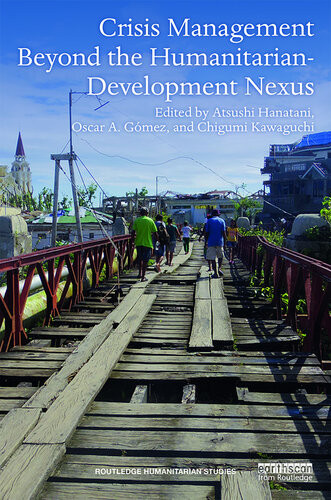

Most ebook files are in PDF format, so you can easily read them using various software such as Foxit Reader or directly on the Google Chrome browser.
Some ebook files are released by publishers in other formats such as .awz, .mobi, .epub, .fb2, etc. You may need to install specific software to read these formats on mobile/PC, such as Calibre.
Please read the tutorial at this link: https://ebookbell.com/faq
We offer FREE conversion to the popular formats you request; however, this may take some time. Therefore, right after payment, please email us, and we will try to provide the service as quickly as possible.
For some exceptional file formats or broken links (if any), please refrain from opening any disputes. Instead, email us first, and we will try to assist within a maximum of 6 hours.
EbookBell Team

0.0
0 reviewsIn addressing humanitarian crises, the international community has long understood the need to extend beyond providing immediate relief, and to engage with long-term recovery activities and the prevention of similar crises in the future. However, this continuum from short-term relief to rehabilitation and development has often proved difficult to achieve. This book aims to shed light on the continuum of humanitarian crisis management, particularly from the viewpoint of major bilateral donors and agencies. Focusing on cases of armed conflicts and disasters, the authors describe the evolution of approaches and lessons learnt in practice when moving from emergency relief to recovery and prevention of future crises.
Drawing on an extensive research project conducted by the Japan International Cooperation Agency Research Institute, this book compares how a range of international organizations, bilateral cooperation agencies, NGOs, and research institutes have approached the continuum in international humanitarian crisis management. The book draws on six humanitarian crises case studies, each resulting from armed conflict or natural disasters: Timor-Leste, South Sudan, the Syrian crisis, Hurricane Mitch in Honduras, the Indian Ocean earthquake and tsunami in Indonesia, and Typhoon Yolanda. The book concludes by proposing a common conceptual framework designed to appeal to different stakeholders involved in crisis management.
Following on from the World Humanitarian Summit, where a new way of working on the humanitarian-development nexus was highlighted as one of five major priority trends, this book is a timely contribution to the debate which should interest researchers of humanitarian studies, conflict and peace studies, and disaster risk-management.